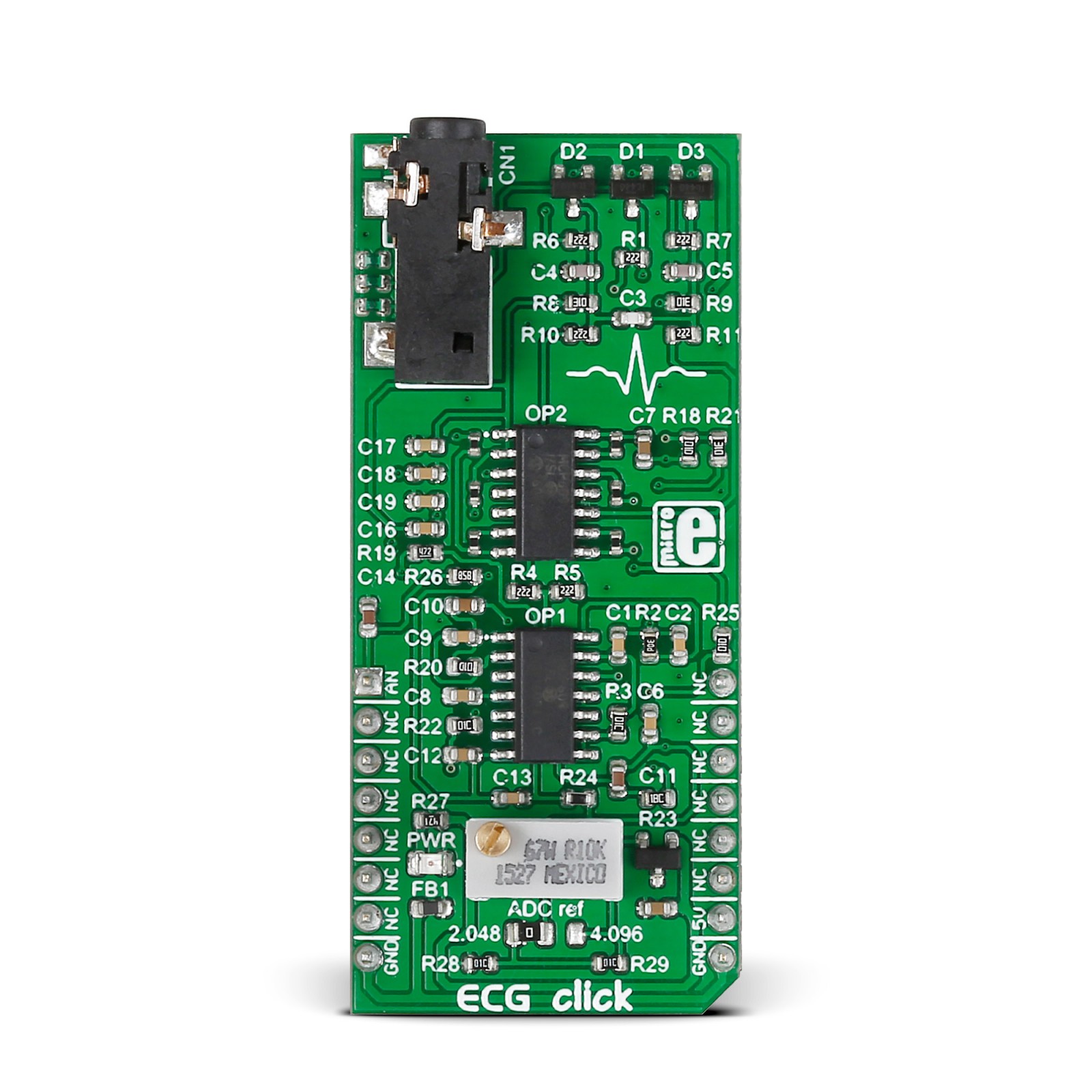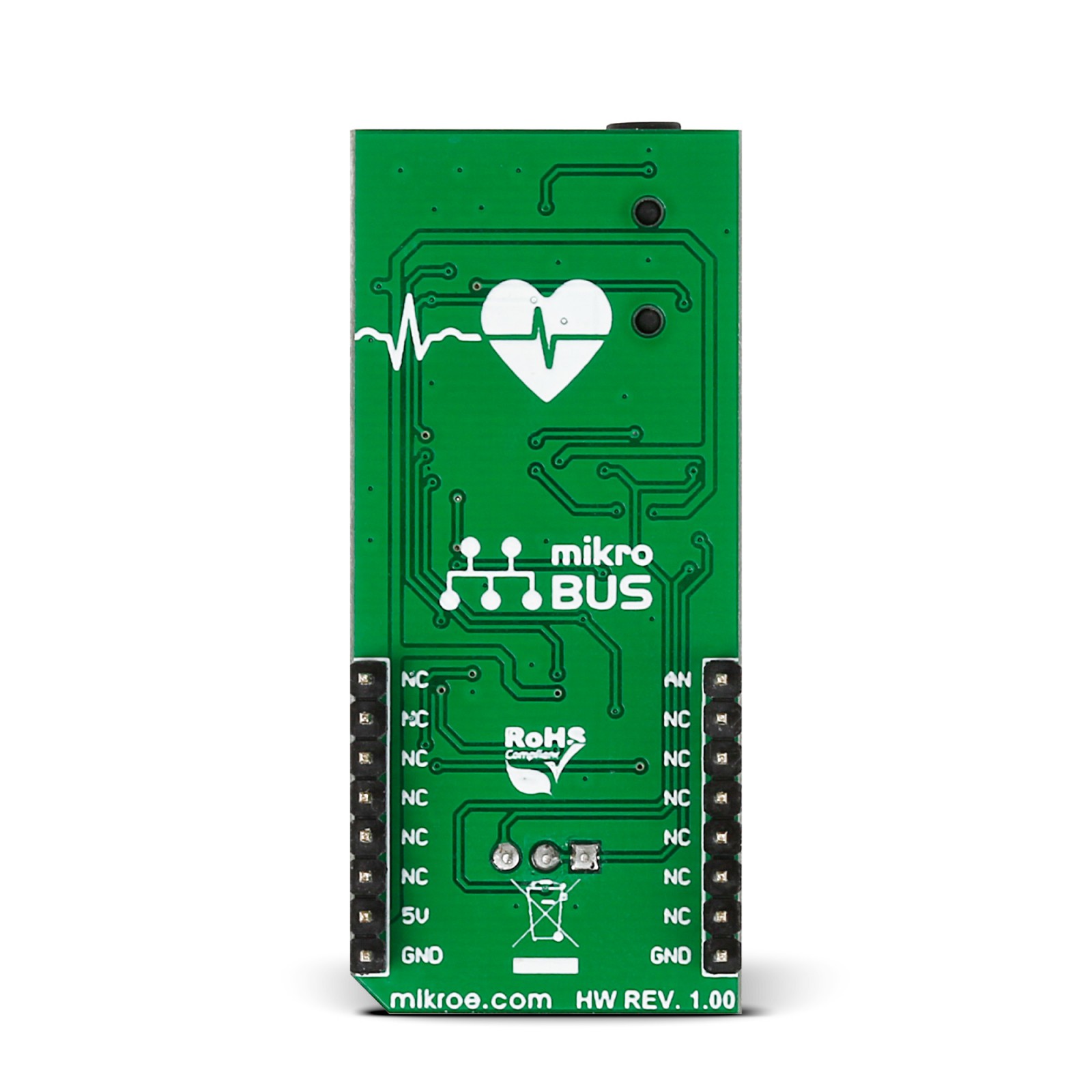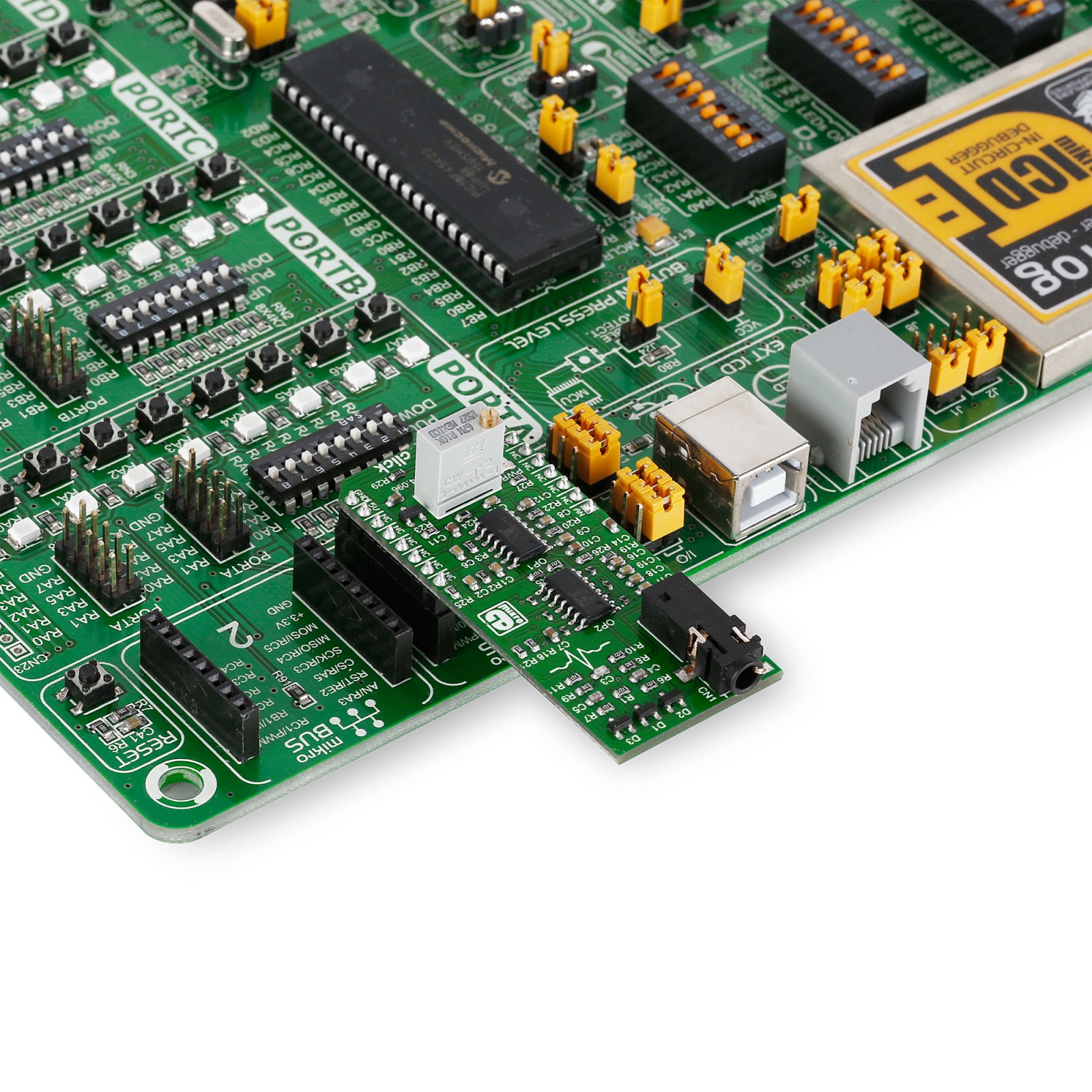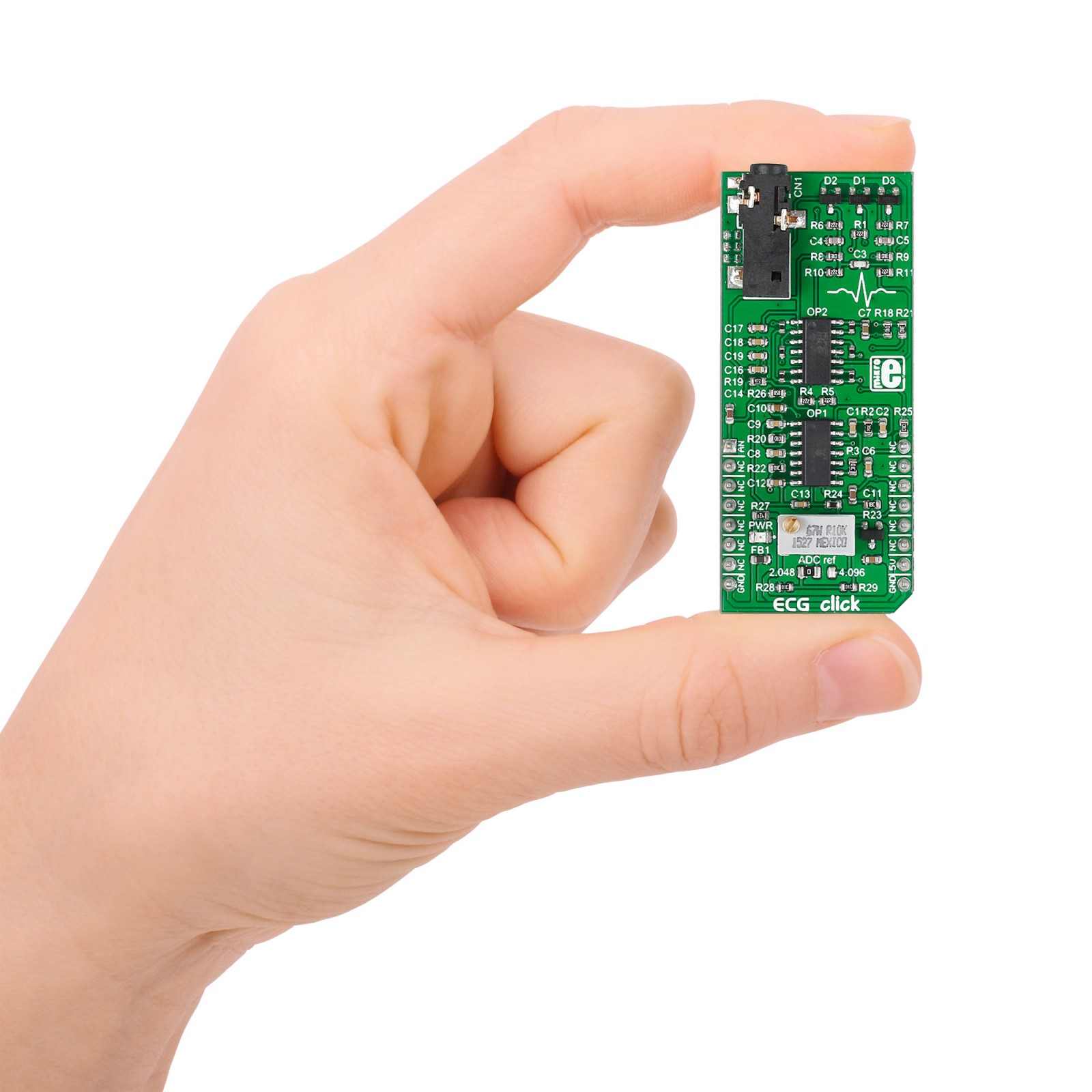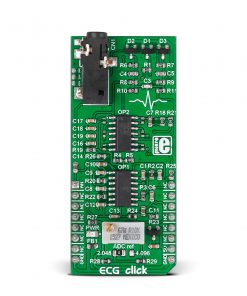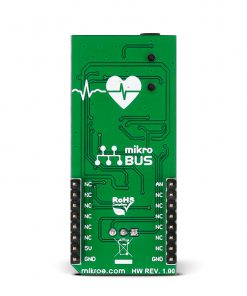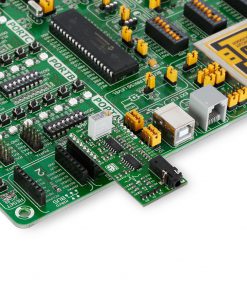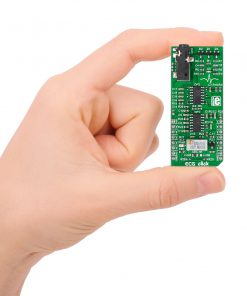ECG Click is a compact add-on board that measures the electrical activity of a beating heart through electrodes taped to the skin. This board features two MCP609s, a micropower CMOS operational amplifier from Microchip. The ECG Click is an ECG (or EKG) machine on a Click board™ and requires little setup, and the final measurement results can be displayed as an Electrocardiogram using a free Windows app. The minimal setup requires cable and electrodes, which MIKROE offers as an ECG Click bundle (https://www.mikroe.com/ecg-click-bundle). Of course, you will also need a target board with an MCU with at least a 10-bit ADC (preferably powered by an external battery). This Click board™ makes the perfect solution for the development of health-tracking and fitness devices, quantified-self wearables, portable battery-powered Holter, or you can make an LED blink in sync with your heart.
ECG Click is supported by a mikroSDK compliant library, which includes functions that simplify software development. This Click board™ comes as a fully tested product, ready to be used on a system equipped with the mikroBUS™ socket.
 METHANE Click
1 × R335.00
METHANE Click
1 × R335.00  RTC 2 Click
2 × R465.00
RTC 2 Click
2 × R465.00  BEE Click
1 × R800.00
BEE Click
1 × R800.00  Proximity Click
1 × R220.00
Proximity Click
1 × R220.00  GSM-GPS Click
1 × R1,350.00
GSM-GPS Click
1 × R1,350.00  Alcohol 3 Click
1 × R710.00
Alcohol 3 Click
1 × R710.00  DAC Click
1 × R410.00
DAC Click
1 × R410.00 
